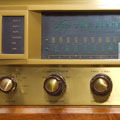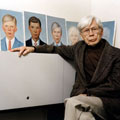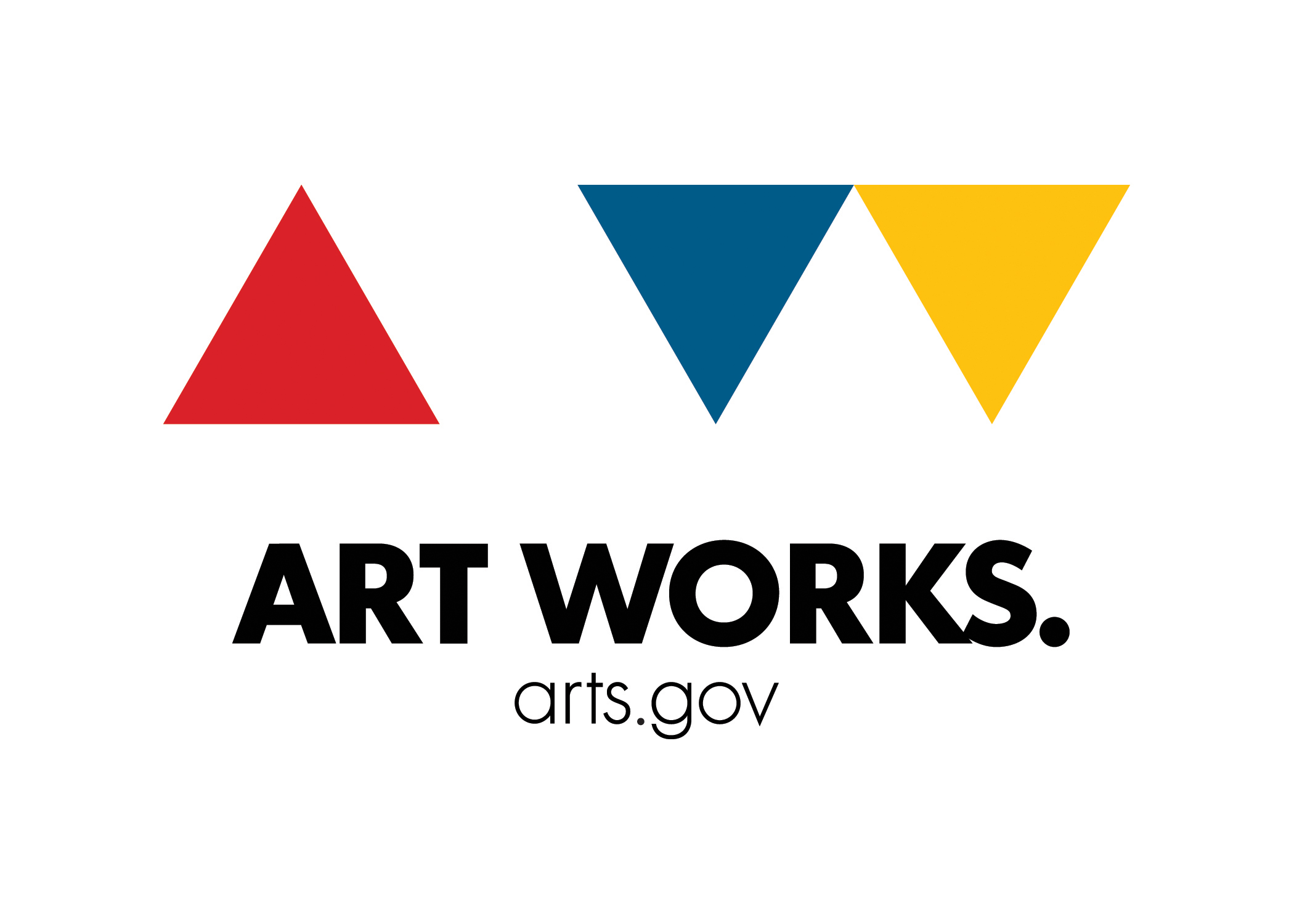JOE RICHMAN (host): In 2017, a man was buried on a narrow, mile long island off the coast of the Bronx in New York City. He’d been dead for months, but the city hadn’t figured out his name, so he was placed in a simple pine coffin that was stacked in a mass grave. The only marker was a white post that read, Plot 383.
Since 1869, more than a million people have been buried on Heart Island. It doesn’t look like a typical cemetery. There are no headstones or plaques, just white posts with numbers on them. Each one marks a trench with about 150 coffins inside. There’s a broad range of people buried here. People whose families couldn’t afford a private burial, people who couldn’t be identified, and people who died in various waves of epidemics that swept the city.
In the 1980s, it was AIDS, and most recently, COVID 19. But for more than a century, Heart Island has been mostly off limits.
This is The Unmarked Graveyard, a new series from Radio Diaries where we’re untangling mysteries from Heart Island, America’s largest public cemetery. I’m Joe Richman. Over the next several weeks, we’ll be bringing you stories about people who ended up on Heart Island, the lives they lived, and the people they left behind.
[MONTAGE OF CLIPS FROM THE SERIES]
JOE RICHMAN: Today, episode one, it’s about the unidentified man buried in plot 3 83. At the time he was buried, he actually had several people looking for him. He had lived two lives, in different places and under different names. We begin in Inwood, Long Island, with his mom, who named him Neil.
SUSAN HURLBURT: My name is Susan Hurlburt, and I’m Neil Harris’ mom. I kept all of Neil’s pictures and memorabilia. This is the Neil box. This is his father. I always saved the picture for Neil. Neil’s father and I, unfortunately, were just a one-night stand. But things happen, and Neil happened. This was something that Neil wrote to me when he was little in school. (Reading) My hero is my mom because she has always been there for me. She always brings me and my friends to Taco Bell and Pizza Hut. I remember when we didn’t have a home or any money, and we were living with my aunt. After a while, she got a job and we got a home. And that’s why my mom is my hero.
Life was good then. I would come home and make a little dinner or whatever, and we’d eat and play a little video games. He was fun. He was cuddly. This was him sleeping with all the dogs, and the dogs adored him. We wound up calling him Dr. Doolittle because this kid loved the animals.
And then as he got older, something switched – like somebody flipped a switch on him. One night, I heard him talking in his room. And I thought, oh, he’s got somebody over. So I knocked on the door and I said, who are you talking to? The ghost. And I’m like, what ghost? And then he started fighting. And he’s like, they’re all over me. They’re all over me. And I was in my office one day, and he came in and he’s like, Ma. And he pushed me, and I went flying across the room. And he said, you don’t think that I don’t know you’re trying to poison me? He had a glare, like he wanted to kill me. I was actually afraid of my son, the first time in my life.
And I said, I want to have him put in a hospital for psychiatric evaluation. He went. And I spoke to the doctor, and she said he is schizophrenic. On medication, he’s fine. She said, but he has asked to stop the medication, which is his right. And he has asked to be released, and off they sent him. He was 29 years old. I felt helpless. I felt like there was nobody there to help – nobody. And then one day he’s like, I want you to drop me off at the Inwood train station. And he would sleep on the platform. When we pulled into the parking lot of the Inwood train station, he just got out, took his little backpack, threw it over his shoulder, walked away. Never looked behind.
And there was a cop sitting in the parking field there, and I got out and I said, that’s my son, and he wants to be here. He wants to be homeless. And the cop said to me, and it’s his right. He said, but we’ll check up on him. So I figured, OK, so I’ll go every week. And the first time we went down, we looked and we did see him, but he walked away from me. And I was like, Neil, wait. I just want to give you money. And he stopped, took the money and walked away. And that was the last time I saw him.
JOY BERGMANN: My name is Joy Bergmann, and I live on the Upper West Side of Manhattan. And this is my dog, JJ (ph). JJ, let’s go. Every day, JJ and I are in Riverside Park. This is the bench where we would see Stephen in all weather, all times of day. He’d always be sitting bolt upright on the bench, big canvas rucksack at his feet, same clothes, same facial expression. Yeah, JJ. You remember Stephen.
BILLY HEALEY: I’m Billy – Billy Healey. I used to sit up at the corner there, feed my little birds. And that’s when I talked to him. And he told me that he was from Long Island, and his name was Stephen. It was like pulling teeth to get him to say anything. He was not a talker. He didn’t seem to trust people much. At the time, I still wasn’t sure if he was sleeping in the park because I see him sitting on the bench every day with his knapsack, but I never saw him sleep. So I called the outreach for the homeless. They went to talk to him, and they told me Stephen doesn’t want any help.
BERGMANN: It was always kind of reassuring to see him ’cause he was such a big guy and so gentle in his presence. He was a constant presence in the park, but a mysterious one. Couldn’t quite figure out where he was from, what he was doing here, and why he just never left.
HURLBURT: (Reading) Neil Harris was last seen in Inwood, N.Y., on December 12, 2014. He was last seen wearing a tan Carhartt jacket, black hoodie, blue jeans, tan work boots and a backpack. If you have seen or know Neil’s whereabouts…
This was a missing persons flyer that we made, and that went out every week – every week, like clockwork, on Mondays. Monday morning, on every social media platform that I could get my hands on, it went out. And then a year went by – nothing. And then another year – still nothing.
BERGMANN: After about maybe a year of seeing him in the park, I was going to recycle some magazines or something one day. And I said, oh, maybe I’ll bring them to the guy in the park. Maybe he’d like something to look at. So I would bring him, periodically, bags of magazines. And I would see him, as I walked away, start looking through them with interest. He never said thank you. He just kind of gave me a half nod as I would approach.
HEALEY: After seeing him for so long and seeing there were some needed things, I told him, oh, do you like pork ribs or do you like potato salad? I would ask him, and he would say yes. So my wife would put something in the microwave of leftovers, and I would bring him a plastic container with a fork. And when it got real cold, I brought him a winter coat. And he said, oh, no, I don’t want one. I have one in my pack. I said, do you like this? And I was wearing a Burgundy hoodie, and it had, like, fake fur inside or something. It was warm. And he said, yeah, I like that. So he wore it for two years that I know of. But I know he died in it.
JIM LITTLEFIELD: My name is Jim Littlefield. I was formerly a director of security for The Trump Organization and ran security for four condominiums on Riverside Boulevard – luxury condominiums with Broadway actresses, baseball players of note. I believe it was around Easter time, early spring. I pulled up that morning and parked my car, and then I looked over and I noticed a backpack sitting on top of, like, a milk crate. And then I looked, and I saw a person sitting down, knees bent, and his head was hunched down, almost as if in contemplative prayer. I thought maybe he’s asleep. You know, poor guy. I’m going to let him stay there. And I walk away and went to work.
Next morning, I came back to work and I saw he – basically in the same position. So I kind of yelled loud, hey, fella, you all right? He didn’t budge. And at that point, I touched him. And I’m a 70-year-old retired New York City police sergeant. I know what rigor mortis feels like, and he was in it. This guy had reached the end of the road. I called 911. The police arrived. I was happy that I was able to do what I could do and then went to work. I think I spoke to the police officer again a week or two later. And I said, did you ever identify that young man? And he says he didn’t and he didn’t think anybody did at that point.
(SOUNDBITE OF MUSIC)
HEALEY: It was the next day I was told they found him dead. Right away, I said, was it trauma? Was he murdered? You know, was something bad done to him? And they said absolutely no trauma. It looked like he just had a heart attack or something.
BERGMANN: After he died, people put flowers on the bench where Stephen would sit. They put signs up and cards. You know, when you live in a big city, there’s the anonymity of the big city that I think we all sort of treasure. But then there are the constant presences, the people whose names you don’t know but you see them every day. The guy who sells the fruit on the corner, the guy you see sweeping the sidewalk – these are people that become woven into your fabric of your experience in a neighborhood. And when one of them goes away, there is a loss. There is a loss.
HEALEY: He was a sweet young man, and many people thought that about him. Rest in peace, Stephen.
JESSICA BROCKINGTON: My name is Jessica Brockington, and I’m a journalist. I was living on 70th Street. I have two little dogs, and we would walk in Riverside Park. I felt sad that he had died. I felt sad that the bench was empty. You know, maybe it’s a year later, year and a half. I’m looking in a database of missing persons. And as I’m scrolling through the photos, I recognize a photo of Stephen. And I thought, holy [expletive], I know that person. And it’s got a name attached to it – Neil Harris Jr.
So I take the name and I turn around and start Googling it and I find a Facebook profile. I was going through every single post on that Facebook page, trying to figure out who set it up. Who was Susan Hurlburt?
HURLBURT: Monday, July 2nd, 2018. Still missing, still praying. I’ll never give up on you.
BROCKINGTON: Noticing pretty quickly that Susan Hurlburt is posting A plea, Every Monday.
HURLBURT: Monday, July 16th, still missing, still praying. If seen, please tell him he is missing.
Monday, July 23rd, 2018, still missing, still praying.
Monday, August 6th, still missing, still praying.
BROCKINGTON:And I’m, I’m completely obsessed with it at that point.
HURLBURT: Help me locate my son. I will never give up on you, Neil.
BROCKINGTON:I know that the person is dead. And I know that somewhere the New York City Police Department have information on him that would help her. But when I talked to the detective who had the case, he says that he’s reviewed what he has in his files and the photos that I have sent him, and he has decided that this is not the same person.
So I called the organization that is helping Susan Hurlburt put out missing persons posters. And I tell the guy, I don’t want to upset her if it’s not as sure as it should be, but he turns around and calls her immediately.
HURLBURT: And he’s like, I have some information for you. Do you know a Jessica? And I’m like, Jessica?
No. And he’s like, well, I think she knows where your son is. And I was really overjoyed and he’s like, well, if it is Neil, then he’s deceased. And I’m like, oh. She called me. And she said, OK, so there’s this guy that’s been sitting in Riverside Park. And I’m like, Riverside Park? Where is that? She said, in Manhattan. It’s on the West Side. I’m like, are you kidding me? Neil would never. He was petrified of the city. So she said, who’s Neil? Then she’s like, oh, that’s right. I keep forgetting. She said…
BROCKINGTON: I know this guy as Stephen. That’s what he called himself, right?
HURLBURT: And I’m like, Stephen? She said, yeah, I’m just going to tell you what I got from him. She said, I would walk through the park. I have two dogs. And they would immediately run to him.
BROCKINGTON:And he just reached down and started petting them and kind of smiled and wasn’t necessarily smiling at me, but was focused on the dogs.
HURLBURT: And I’m like, that’s got to be Neil. And then I’m like, arguing within my own head – my head, you know, saying, no, no, no and then saying maybe, maybe, no, no, no, no, no.
BROCKINGTON: And then I sent her the medical examiner’s photo of her son after his autopsy.
HURLBURT:And the picture came up. He was more, like, disheveled. I could tell he hadn’t shaven in a while. But I know my son. And I knew as soon as I saw that picture, that was my son. I felt like I couldn’t catch my breath. He died from an ulcer. That’s what they have down on the death certificate.
(SOUNDBITE OF MUSIC)
UNIDENTIFIED PERSON #5: Dear friends altogether and dear neighbors. His real name was Neil. We in the neighborhood only knew him as Stephen. That was his adopted name.
BROCKINGTON: There’s a church on 74th Street – a community church. The pastors there and the congregation there also knew Stephen, and they decided that they would have a service for him. Susan and her family came, a bunch of his friends, and then all these people from the neighborhood came.
HURLBURT: I walked in. And looking at all these people, I’m like, I don’t know these people. Neil didn’t know these people. And I said it to my sister. I said, you know, Neil didn’t know them. And she looked at me and she said, well, obviously he did. Listen to what they’re saying.
HEALEY: I talked to him at least two or three times a week. When I didn’t see him, I’d stop and ask somebody, where’s Stephen? Because he was always sitting.
UNIDENTIFIED PERSON #6: Children came up to me and said, oh, we knew him. We said hello to him.
UNIDENTIFIED PERSON #7: It was after Neil no longer occupied this bench that we realized in the neighborhood how much he had become a part of the fabric of our lives.
HURLBURT: And my husband nudged me. And he said, get up there and say something. And I’m like, I don’t know what to say.
I’m not good at this – not good. But I have to tell you, I said it from when I first heard from Jessica. You’re all angels, every one of you. You watched over my son. You took care of him. And that was all I ever prayed for, for four years.
There are people that really, really care. Even if it’s a stranger, they care. That’s phenomenal.
(APPLAUSE)
HURLBURT: That was the only good feeling I came out of there with because other than that, it was not good feelings. I was hurt that I was left out of his life as his mother. I kept saying, I did something wrong. What did I do? Or what didn’t I do? Everybody kept saying, well, at least now you have closure. There’s no closure. I don’t understand what people think when they say, well, at least now you know. I’d rather not know. I’d rather keep on looking.
UNIDENTIFIED PERSON #8: You’re Susan and company, yes? Yeah. This is the marker right here where your loved one is buried.
UNIDENTIFIED PERSON #9: So is this Neil?
HURLBURT: Yeah, that’s Neil. Here I am at Neil’s graveside, finally. I still have your PlayStation, Neil. I love you. I miss you.
When they first told me that he was here on Hart Island, I was pretty upset. I was like, (gasping) disgusting. How could – oh, my God. There are other bodies also in there with him, a bunch of them stacked together. And that’s the only thing that’s a little unsettling because I worry about, is his neighbor a friendly neighbor? I know these things sound crazy, but these are the things that go through in my mind. So, yeah, I thought about – no, I got to get him out of there.
But then I remembered his father is also buried on Hart Island, buried down the block a little bit, I guess. He died, and the family couldn’t afford to have a proper funeral or anything. Neil was only 9. And he did always say he wanted to come here. Neil always wanted a relationship with his father. And my hope is that they’re together now and they’re developing a relationship and they’re hanging out somewhere together. The trees are beautiful. There’s water all around. It’s a very quiet, serene spot. And that was Neil. He was very quiet in life. So, yeah, this is where he will remain.
(SOUNDBITE OF MUSIC)
JOE RICHMAN (HOST):That was Susan Hurlburt, remembering her son, Neil Harris Jr. It’s only been a few years that family members have been allowed to visit Heart Island. And after decades of being largely inaccessible, the island is expected to open to the general public later this year.
Our story about Neil Harris Jr. was produced by Elisa Scarce. It was also an official selection of the 2023 Tribeca Festival. Our team includes Nellie Gillis. It’s Micah Hazel, Lena Engelstein, and myself. Our editors are Ben Shapiro and Deborah George. Sound mixing by Ben Shapiro. Special thanks to Jessica Brockington, who shared research and audio from her search for Neil Harris family.
This story would not have been possible without her work. We also couldn’t make this series without the help of Melinda Hunt and the Heart Island Project. Visit heartisland. net to learn more. And thanks to filmmaker Eric Spink of Vacant Light for his recording of Neil’s memorial service. Also Matthias Bossi and Stellwagen’s Symphonette.
For the song Plaintiff and to our broadcast partner NPR’s All Things Considered. Radio Diaries has support from the National Endowment for the Humanities, the Lily Auchincloss Foundation, New York City’s Department of Cultural Affairs, and from listeners like you. We are proud members of Radiotopia from PRX, a network of independent, creator owned, listener supported podcasts at Radiotopia.fm. Over the coming weeks, we’ll be bringing you more stories from Hart Island. Coming up next, a story about a man who chose to be buried there.
DAVID SACHS: No one knew who was going to die, but we didn’t know at that time whether he would live three more weeks, three more months, three more days, three more hours. We didn’t know.
RICHMAN: I’m Joe Richman of Radio Diaries. See you next week.








